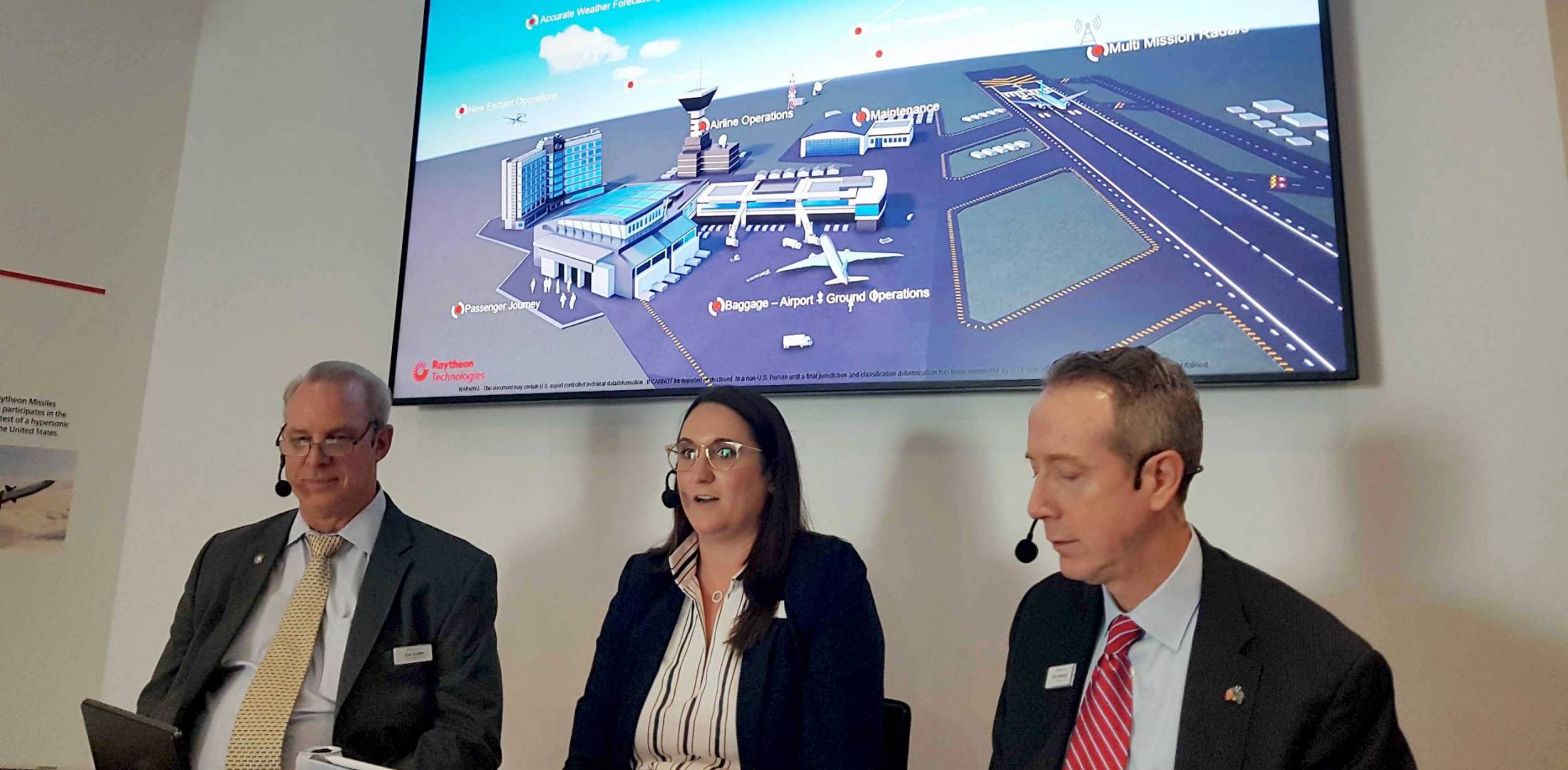Officials from Raytheon Technologies and its subsidiaries want to help the aerospace industry understand how recently developed products, efficiencies, and innovations from the ever-widening conglomerate fit together. After a series of recent acquisitions, the group today consists of the combined attributes of Collins Aerospace, Pratt & Whitney, Raytheon Intelligence & Space (RI&S), and Raytheon Missiles & Defense.
RI&S announced that it recently negotiated pricing with the FAA for a revised scope of the NextGen Weather Processor (NWP) program "with $48 million in potential effort for the existing contract," according to Raytheon. The contract, which includes an executed modification for $21.7 million, continues work to "ensure enhanced safety, security, and efficiency of National Airspace System operations." The contract also covers work to develop a common aviation weather display to improve safety and situational awareness.
“We are now in the process of deploying this capability across all U.S. installations and trade routes so that controllers have the latest information they can use to base decisions on,” said Denis Donohue, RI&S president, surveillance and network systems. “NWP can identify terminal and en route weather safety hazards hours in advance to better support traffic flow-management and mitigate weather-related delays,” Donohue said.
Pratt & Whitney and Collins Aerospace, both divisions of Raytheon Technologies, have signed a full-flight data delivery agreement to improve collaboration between the two companies. Collins’s GlobalConnect suite will enhance engine health management services offered to Pratt & Whitney customers as part of its EngineWise Insights+ solution.
Recent mergers and acquisitions have given Raytheon Technologies a breadth of capability that includes engines, advanced avionics and communications systems, and high-technology sensors.
“We are involved in roughly two-thirds of the world’s air traffic, in 30 different countries, that our solutions support,” Donohue said. “Obviously, a major customer of ours is the U.S. Federal Aviation Administration. We are particularly involved in the managing of the airspace around highly congested areas. A lot of our work is focused on the terminal segment.”
For RI&S, another product making inroads is the Skyler radar, which employs a phased-array design that allows users to move beyond simple precision approach or surveillance radars to provide new possibilities for monitoring weather, UAVs, air taxis, and other small targets. It can also facilitate the evaluation of micro-weather, which involves measuring weather conditions on a small scale and delivering the information to the right set of users.
“When you think about our technologies, our digital capabilities really span the entire ecosystem, starting with airport and airline operations and moving into air traffic control across our global networks,” said Jen Schopfer, Collins Aerospace president of connected aviation solutions. “With all the content that we have on the aircraft, the Collins systems, the Pratt & Whitney engines, combining that with big data, we’re able to help our customers boost their efficiency and make air travel more sustainable, more enjoyable from a passenger experience standpoint, and more predictable as well.”
Company officials claimed that the combination of data provided by Collins's on-aircraft sensors and Pratt & Whitney engine monitoring provides a “very powerful combination” for customers. Big data parameter analysis has given Pratt & Whitney the ability to help operators save $100,000 per year on service disruptions.
“That comes from things like avoiding unplanned downtime, or if there is going to be downtime, making sure that that happens at the right location, where airlines have the right technicians and the right tools to do the maintenance the right way," said David Emmerling, Pratt & Whitney v-p for mature commercial engines. "It helps us to get the maintenance plans and the workscoping for the engines optimized so that we get the customer exactly what they need to get their full intervals. Full flight data is going to give us a step change to those insights. It’s going to allow us to take those analytics to the next level and get much more powerful predictive maintenance solutions.”
The industry will likely need advances in product performance ushered in by companies such as Raytheon and other exhibitors at the Farnborough Airshow. “You’re already seeing an increase in air travel,” Donohue said. “I think we’re back to 95 percent of pre-pandemic levels. The models all say that that’s going to increase almost exponentially in the next five to ten years.”
